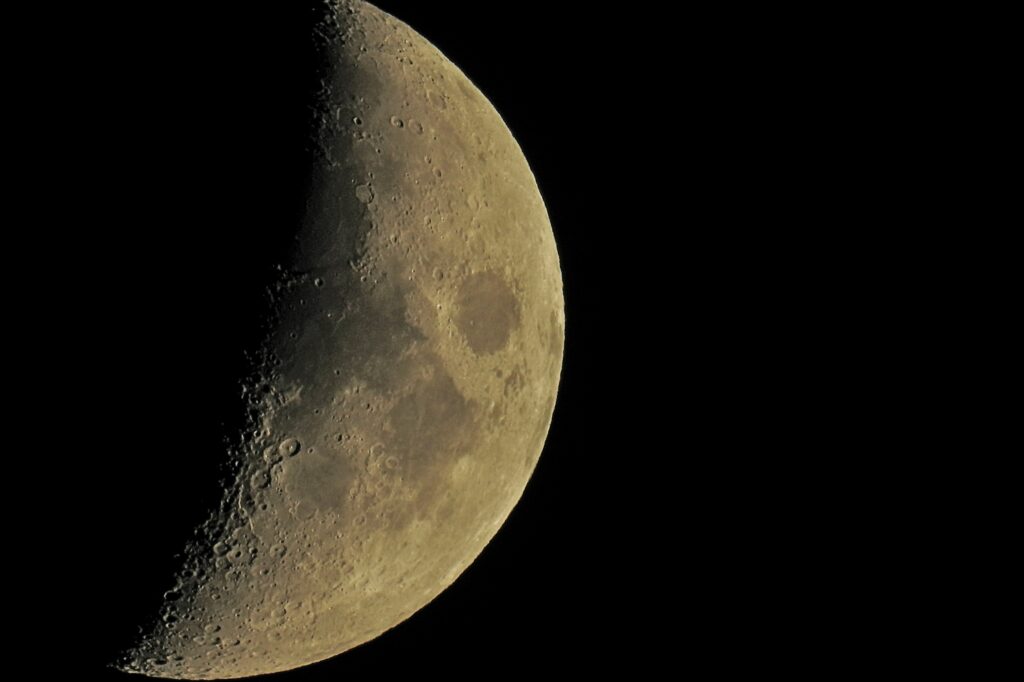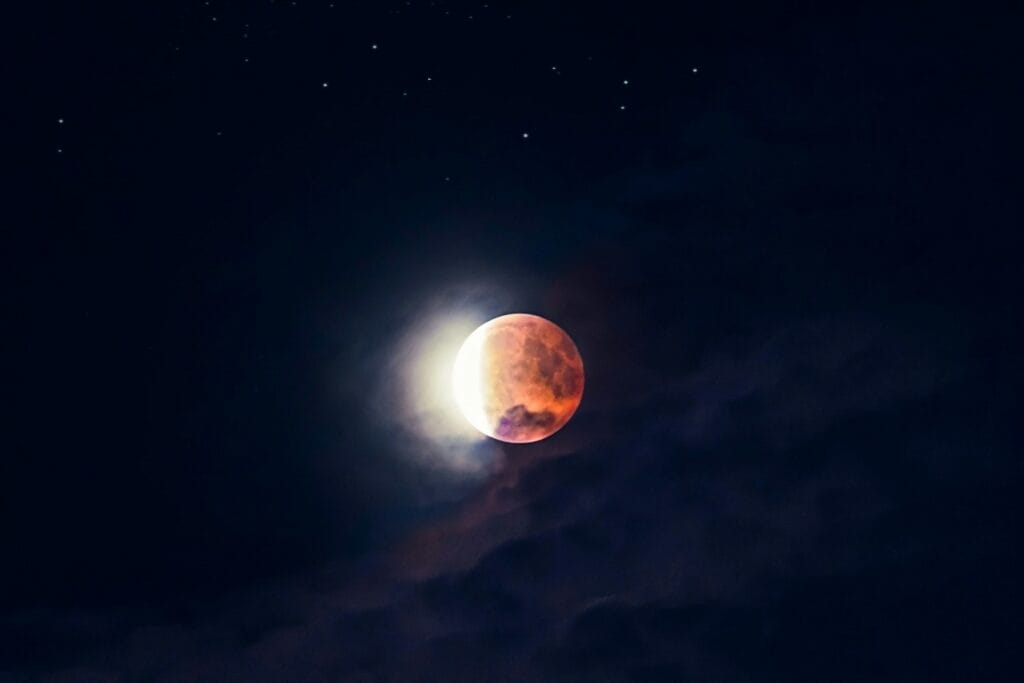One of the most intriguing mysteries that continues to plague mankind is where did the moon come from?
There are a variety of hypothesis that scientists have put forward with the most popular one being the Giant-Impact Hypothesis. In 2024, this hypothesis is starting to fall apart, and a new more intriguing hypothesis is gaining traction.
Let’s explore this mystery in detail and hopefully answer where did the moon come from?
What is the Moon?
In the solar system there are a number of planets that have moons orbiting them. In this respect, a moon is a solid body of rock or ice that orbits a planet instead of directly orbiting the sun.
Both Jupiter and Saturn have many moons – with plenty more being discovered as we explore those planets further with probes.
The Earth has one moon – called ‘Luna’. Similar to the way we call the sun ‘the Sun’ but it also has a specific name ‘Sol’.
Earth’s moon is a body of rock that orbits the Earth every 24 hours. Each year, the moon is gradually retreating from the Earth due to weakening gravitational influence. Billions of years ago, it would have been much closer to Earth, thus orbiting faster and appearing much bigger in the sky.
Sadly, in the future, it will grow so far from Earth that it will eventually be catapulted out into the solar system. Perhaps being captured by another planet on the Sun’s orbital plane or forming an independent orbit around the sun as a planet in its own right.
Don’t worry though, we still have approximately 5 billion years with the moon, by which point, humankind will likely have died out as a species.
The escape velocity of the moon leaving Earth’s orbit will not be enough for it to escape the Sun’s gravity, so it is always destined to form part of the solar system.
Is the Moon a Planet?
Above, I mentioned the moon may well become a planet in the distant future.
This is interesting, because if the moon was not currently in Earth’s orbit, it is large enough to be a planet. Comparably, the moon is slightly smaller than Mercury.
This is extremely unusual because compared to Earth’s mass, the moon is especially large. All other planetary moons are much smaller than their host planet.
With this unlikely size and the fact, it is orbiting the Earth rather than the Sun, where did the moon come from?
What is the Giant-Impact Hypothesis?
Most scientific institutions including the likes of NASA are proponents of the Giant-Impact Hypothesis.
This hypothesis posits that early in Earth’s history a Mars sized object hit the proto-Earth known as Theia. The result of the impact was two remaining balls of rock, one the Earth as we know it and the second being the moon.
To give you an idea of what NASA believes this impact looked like, I have included a NASA simulation.
What Evidence Do We Have for the Giant-Impact Hypothesis?
There is very little evidence for the Giant-Impact Hypothesis.
To gain an understanding we should first describe that a hypothesis is an organised set of scientific assumptions. It differs from a scientific theory which has two added components, a body of evidence and a testable environment.
For example, the Theory of Special Relativity has both observational evidence and can be evaluated using data, analysis and experimentation.
A hypothesis is much weaker in academic weight. The Giant-Impact Hypothesis is simply the leading set of assumptions for its formation among scientists.
That is until recently.
What Evidence Points to Another Cause for Moon Formation?
In the last two decades, the Giant-Impact Hypothesis has come under evidentiary pressure.
When we sent the Apollo missions to the moon we retrieved samples of moon rock.
It was thought that by testing this rock we would be able to discern different isotope levels in the rock that show a difference between the samples..
For the Giant-Impact Hypothesis to be correct, there would need to be marked differences in the make up of Moon rock compared to Earth rock.
All analysis on these samples so far show the Moon is made of exactly the same material as the Earth.
Axial Tilts – Where Did the Moon Come From?
Another anomaly in the data that disputes the impact hypothesis is that the moon shares the same axial tilt as the Earth.
This observation is extremely weird, as the chances of two objects colliding, and then having the same axial tilt is close to zero. If anything, you would expect opposing axial tilts or at the very least, a difference in tilt.
The Moon however has the same axis as Earth as they transit around the sun.
How Old is It?
Originally it was thought the moon was younger than the Earth. The Earth formed roughly 4.54 billion years ago according to latest analysis, with the moon expected to be around 50 million to 100 million years younger. This is supposing the assumption of a giant-impact.
Latest testing of rocks concerning the age of the moon put it much closer to Earth’s age, if not exactly the same age. One of the goals of the Artemis mission is to source more rock samples for testing to confirm these findings and try and gain a more definitive age estimate.

Where Did the Moon Come From?
The answer is no one knows.
A growing hypothesis is that Earth and the Moon formed at the same time in close enough proximity to one another to be bonded, but far enough apart that they didn’t combine to become a single entity.
This would explain why the material forming the rock of both are for all intents and purposes identical and why they both have a common axial tilt.
The problem with this hypothesis is it seems to bely the physics. The precision required for the moon to form in this way seems statistically impossible.
It may be the case that we will never be able to answer where did the moon come from? It may be an enduring mystery that remains unanswered.
The new Artemis missions may yield additional evidence to support one hypothesis over another. Whether it will collect evidence to form a definitive theory remains to be seen. But time will tell, which we have plenty of, as the moon will be our buddy for billions of years to come.
Enjoy Discovering More About Space?
Make sure you bookmark our site for future articles on a variety of topics and in the meantime, check out other space myths and science related blog posts.
